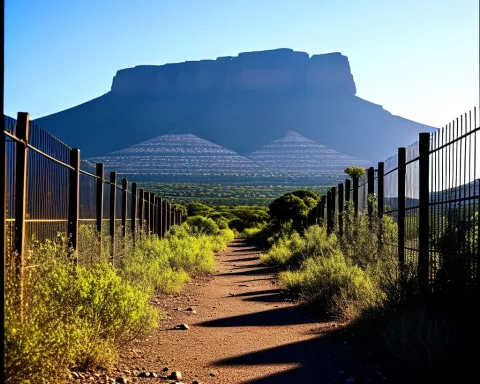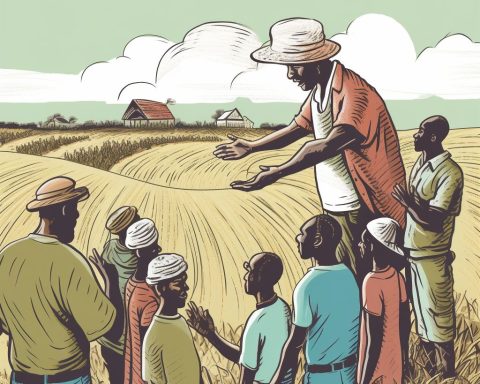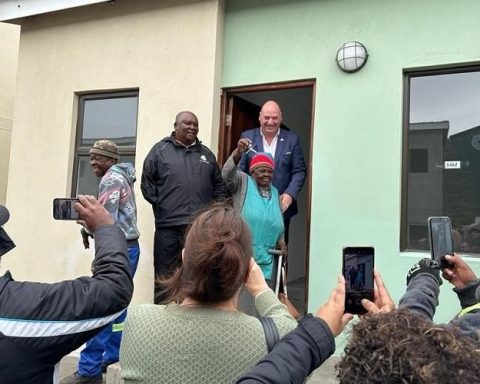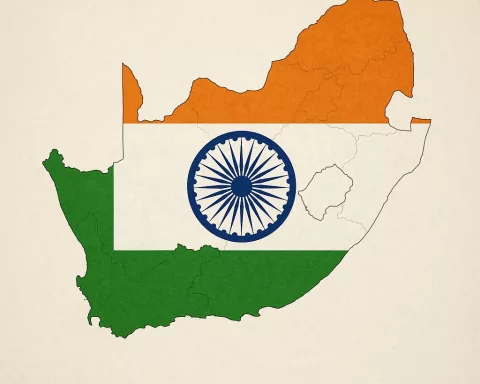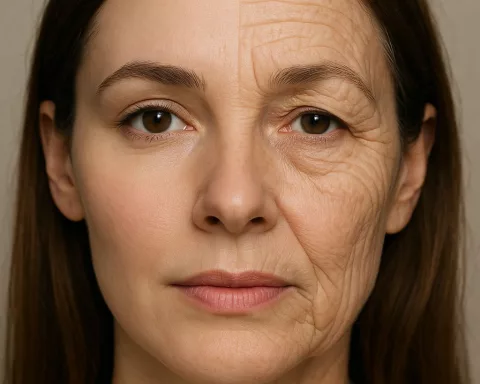The Protea Village reclamation project is a joyful step toward healing and fairness for families affected by apartheid. On a sunny Tuesday, community members and government officials came together to celebrate the start of building 86 new homes for those who lost their land decades ago. With a mix of excitement and hope, families like Kathleen Basson’s, Sonia Roman’s, and Martha Thomas’s are eager to return to a place filled with memories of love and connection. This project not only restores homes but also symbolizes a brighter future where communities can thrive together. It shows that when people unite with a shared goal, they can overcome past injustices and create a better tomorrow.
What is the significance of the Protea Village reclamation project?
The Protea Village reclamation project symbolizes the restoration of community and historical justice. It marks the construction of 86 homes for families displaced by apartheid, revitalizing a fragmented community and paving the way for a more equitable future through collaboration between the government and local residents.
A Historic Beginning in Protea Village
On a radiant Tuesday morning, excitement filled the air in Protea Village, Bishopscourt, as land claimants, community members, and government officials gathered for a sod-turning ceremony. This event marked the initiation of constructing 86 homes, signifying not merely the creation of structures but the revival of a community fragmented by apartheid’s harsh policies.
From 1959 to 1970, the apartheid-era Group Areas Act resulted in the forced relocation of over a hundred families from Protea Village to the Cape Flats. Originally settled as far back as 1834, Protea Village had blossomed into a vibrant community complete with a church, a shop, and a freshwater spring spread across 28 hectares. Today, Bishopscourt is one of Cape Town’s wealthiest suburbs, while the Cape Flats grapple with issues like crime, unemployment, and poverty. According to Property24, properties in Bishopscourt can fetch prices ranging from R20 million to sometimes over R100 million.
In 2006, a successful land claim led to 86 families opting for land rights restoration, while 46 families chose financial compensation. The construction of essential infrastructure—water, electricity, and roads—is now set to commence, with homes expected to be ready by 2027. Kathleen Basson, now 93, was in her twenties when she and her family were forcibly displaced. Recalling this, she shared with GroundUp, “It’s joyous, almost overwhelming to think that we’ve got so far.” Although her memories of leaving are filled with sorrow, the prospect of reuniting with her community brings her immense joy.
A Long-awaited Homecoming
The families have patiently waited nearly three decades to reclaim their land. In 2021, the National Department of Public Works and the City of Cape Town handed over two state-owned plots, totaling 12 hectares, to the Protea Village Community Property Association. The project employs a unique cross-subsidization model: open-market plots are sold on one side of Kirstenbosch Drive to finance the homes for returning families. Additionally, four hectares will become a publicly accessible greenbelt running along the Liesbeek River. The first 33 open-market plots have already sold at an average price of R4.5 million, with another 17 plots scheduled for sale later this year.
Among those present at the ceremony was 78-year-old Sonia Roman. She recounted her family’s forced relocation to Heideveld and vividly remembered how, at 16, she saw their furniture loaded onto a truck, leaving some behind. “It was just sand and no trees,” she said, describing their new harsh environment. Despite the hardships, Sonia holds onto the hope of seeing her family return to Protea Village. “There was never any crime in this place. We didn’t have lights but everybody knew one another. It was a lovely place to be,” she fondly recalls.
Martha Thomas, now 84, had just started her nursing career when she was uprooted from Protea Village. Raised by her single mother in a home with a flourishing garden, she remembers a life without hunger. “Today is so sad that we have to pay for everything. Everything is so expensive. I really miss the life that we had in Protea,” she laments.
Community and Government Collaboration
Dignitaries such as Cape Town Mayor Geordin Hill-Lewis, Minister of Public Works and Infrastructure Dean Macpherson, and Minister of Land Reform and Rural Development Mzwanele Nyhontso attended the ceremony. Nyhontso praised the model used in this restitution effort, stating, “I wish other Communal Property Associations (CPAs) could come and study this model of working together and complying with the law.”
In his address, Hill-Lewis underscored the transformative impact of residing closer to job opportunities, describing it as an “empowering game-changer” for the families. He acknowledged the significance of the claimants’ return to what has now become an affluent suburb. “Thank you for your patience and your resilience all these long years, and for your commitment to building a successful and sustainable community here. I know we still have a little way to go before we can hand over the keys to your new homes, but we are near the end of the race,” he remarked.
The narrative of Protea Village extends beyond land restitution; it intertwines with the broader historical and socio-economic fabric of South Africa. The return of these families to their ancestral land serves as both a correction of historical injustices and a testament to the enduring human spirit. It reflects the potential for communities to rebuild and thrive, even in the face of systemic oppression’s lingering scars.
A Blueprint for Restorative Justice
This reclamation endeavor represents a microcosm of the larger restorative justice initiatives unfolding across the nation. It embodies elements of hope, healing, and the relentless quest for equity. It also underscores the complexities and triumphs involved in navigating the intricate processes of land restitution, promising a brighter future anchored in the lessons of the past.
As we witness the revival of Protea Village, let us remember the stories of individuals like Kathleen Basson, Sonia Roman, and Martha Thomas. Their personal experiences encapsulate the emotional and physical upheavals endured by countless others during apartheid. Their return signifies not only a personal homecoming but also a collective step toward reconciliation and restoration.
The greenbelt along the Liesbeek River, open-market plots, and new homes are more than mere physical structures; they symbolize a brighter, inclusive future. They stand as testaments to what can be achieved when communities, government bodies, and individuals collaborate towards a shared goal. This meticulously planned and executed endeavor serves as a blueprint for other restitution projects, demonstrating that with collective effort and a shared vision, historical wrongs can be righted, paving the way for a more equitable society.
Through the lens of Protea Village, we glimpse a future where historical injustices are addressed, communities are revitalized, and the legacy of resilience continues to inspire generations. This narrative, rich with history and human spirit, serves as a beacon of hope and a reminder of the enduring power of community and justice.
FAQ: Reclaiming History: The Return to Protea Village
What is the Protea Village reclamation project?
The Protea Village reclamation project is a significant initiative aimed at restoring land and homes to families who were forcibly displaced during apartheid. The project focuses on building 86 new homes for these families, symbolizing a step towards healing and historical justice.
Why is the Protea Village project important?
This project holds great importance as it represents the restoration of community and historical justice. It seeks to revitalize a fragmented community affected by apartheid policies and fosters a collaborative effort between the government and local residents to create a more equitable future.
Who are some of the families involved in the project?
Families such as Kathleen Basson, Sonia Roman, and Martha Thomas are among those eagerly anticipating their return to Protea Village. Their personal stories reflect the emotional and physical upheavals caused by the forced relocation and their hopes for a brighter future in their ancestral land.
What is the timeline for the construction of the new homes?
The construction of the new homes is set to begin following the sod-turning ceremony held on a sunny Tuesday. The homes are expected to be ready for occupancy by 2027, marking a long-awaited homecoming for the 86 families involved.
How is the project being funded?
The project utilizes a unique cross-subsidization model, where open-market plots are sold to help finance the construction of homes for returning families. This model aims to ensure the sustainability of the project while providing essential infrastructure such as water, electricity, and roads.
What impact does the Protea Village project have on the community?
The Protea Village project has a transformative impact on the community by not only providing new homes but also fostering a sense of belonging and connection among residents. It serves as a blueprint for restorative justice, highlighting the power of collaboration and the potential for communities to rebuild and thrive amidst historical injustices.


